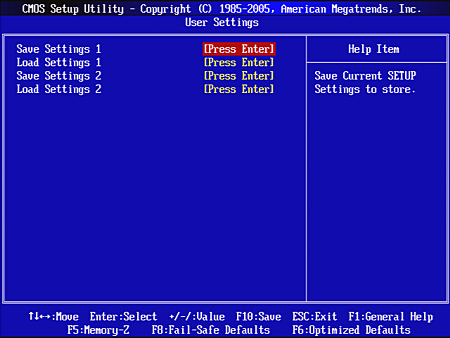11-Way P45 Motherboard Shootout
P45 Platinum BIOS And Overclocking
| FSB Frequency | Stock-800 MHz (1 MHz) |
| Clock Multiplier Adjustment | Yes |
| DRAM Ratios | 1.0, 1.2, 1.25, 1.33, 1.5, 1.60, 1.67, 2.0 |
| PCIe Clock | 100 - 200 MHz (1 MHz) |
| CPU Vcore | 0.9925 to 1.9425 Volts (0.01 Volts) |
| CPU FSB Voltage | 0.89 to 2.47 Volts (0.01 Volts) |
| Northbridge (MCH) | 0.728 to 2.624 Volts (0.012 Volts) |
| Southbridge (ICH) | 0.056 to 3.41 Volts ( 0.06 Volts) |
| DRAM Voltage | 1.428 to 3.324 Volts (0.012 Volts) |
| CAS Latency Range | tCAS : 3-6 ; tRCD : 3-15 ; tRP : 3-15 ; tRAS : 9-30 |
While MSI’s frequency range seems unrealistically high, its CPU core voltage is just a little lower than what some extreme overclockers might demand. Yet the 1.9425V maximum setting is still more than we’ve ever seen any Core 2 series processor stand up to, so we’re far from disappointed.
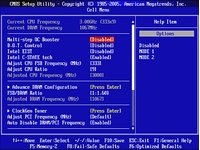
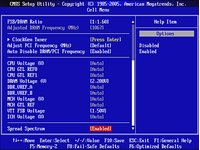
MSI’s Cell menu contains all the most commonly-required overclock settings, but we only see two GTL REF voltage controls. Additional clock generator controls and memory timings are found in sub-menus.
MSI’s Clockgen Tuner sub-menu adds amplitude and skew controls.
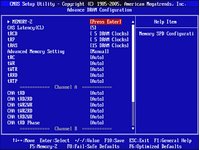
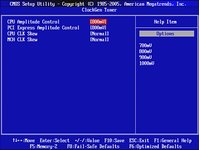
Major and minor timing controls can be found in the Advanced DRAM Configuration sub-menu, and any setting a user doesn’t want to adjust can be left to automatic mode.
A sub-menu within the memory timing sub-menu shows SPD (Serial Presence Detect) data, which is the information motherboards use to automatically configure memory.
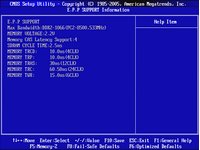
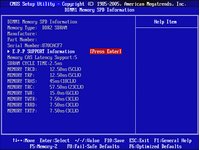
The P45 Platinum is also able to detect EPP values, also known as NVIDIA SLI Memory Mode, which are shown in a sub-menu of the SPD sub-menu. EPP is nothing more than a set of SPD extensions for automatically configuring nonstandard memory speeds, voltage levels, and timings, so it doesn’t require Nvidia hardware to support it.
MSI provides two protected areas within BIOS to store custom configurations, making it easy to return to previous settings.
Get Tom's Hardware's best news and in-depth reviews, straight to your inbox.
Current page: P45 Platinum BIOS And Overclocking
Prev Page P45 Platinum Onboard Devices Next Page P45 Platinum Software And Accessories-
nickchalk Where are the lower price P45 M/B ?Reply
Asus P5Q pro is out for €110 and P5Q deluxe for €165 the price difference is about 70$ in Greece. -
Proximon I suppose I can get some good from having read this. Did you get paid by the word? Maybe next time you could just put together a complete features chart so that we can have some convenient comparison? You know, so someone could go to a chart and see at a glance which boards had eSATA or firewire, or 8 USB.Reply
-
JPForums I'd rather have the overabundance of information than a lack of information. Presentation could use a little refining (I.E. comparison charts and the likes), but having the relevant information available at least is a good thing.Reply -
the introduction and specifics are nice, the comparision isn't. so, why don't you test with an 8500 or qx9650? 6850 are outdated... and a mobo handling a c2d doesn't mean it can handle a quad too, see P5K for example (it stinks when it comes to a q6600).Reply
-
Crashman procithe introduction and specifics are nice, the comparision isn't. so, why don't you test with an 8500 or qx9650? 6850 are outdated... and a mobo handling a c2d doesn't mean it can handle a quad too, see P5K for example (it stinks when it comes to a q6600).Reply
Tom's Hardware wants the performance of current articles to reflect that of recent articles, so a "standard test platform" was chosen a while ago. It will get updated, but probably not before the new socket becomes widely available. -
zenmaster I would have liked to see something such as a P35 and an X48 as controls to help analyze the P45 Performance.Reply
In otherwords, What is the P45 Gaining me over the older P35.
What would I gain by going to the X48. (Or Lose) -
Crashman zenmasterI would have liked to see something such as a P35 and an X48 as controls to help analyze the P45 Performance.In otherwords, What is the P45 Gaining me over the older P35.What would I gain by going to the X48. (Or Lose)http://www.tomshardware.com/reviews/intel-p45-chipset,1961.htmlReply -
johnbilicki The first 17 pages were filled with nothing but junk from ASUS. Do us a favor: don't even bother featuring or *MENTIONING* anything for any reason from a company that refuses to RMA 200-400 dollar brand new motherboards with anything other then used and usually broken junk. It destroyed my enthusiasm for the article.Reply -
dobby nickchalkWhere are the lower price P45 M/B ?Asus P5Q pro is out for €110 and P5Q deluxe for €165 the price difference is about 70$ in Greece.Reply
the p5q PRo is a p43 board, i should know i have one
